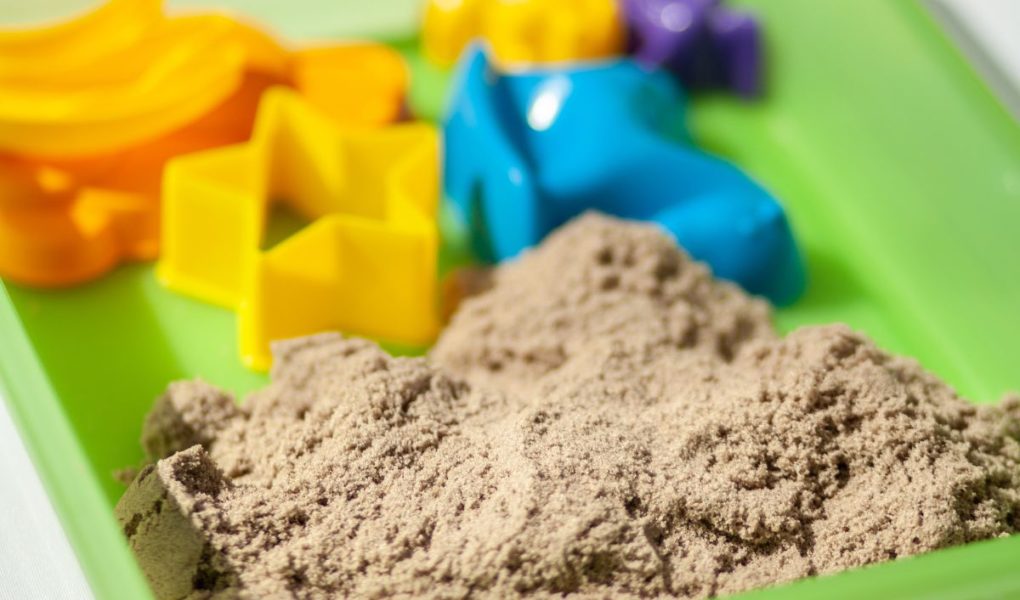Play dough is a staple of childhood fun, offering endless possibilities for creativity and imagination. But have you ever tried adding sand to play dough? Sand play dough combines the best of both worlds: the moldable quality of play dough and the grainy texture of sand.
It’s an excellent activity for kids and can be a perfect project for a rainy day, a classroom activity, or a family weekend. Here’s a step-by-step guide on how to make your sand play dough at home.
Ingredients You’ll Need
- All-Purpose Flour: Serves as the base of the play dough, giving it structure and consistency.
- Salt: Acts as a preservative and provides texture to the dough.
- Warm Water: Helps to bind all the ingredients together.
- Vegetable Oil: Adds a smooth, elastic quality to the dough.
- Food Coloring (Optional): Adds color to the dough for a more engaging play experience.
- Clean, Dry Sand: Provides a unique, grainy texture to the play dough.
Tools
- Large Mixing Bowl: Used for combining the ingredients.
- Measuring Cups and Spoons: Ensures the accurate measurement of ingredients for a consistent result.
- Wooden Spoon or Spatula: For stirring and mixing the ingredients.
- Ziplock Bags or Airtight Container: For storing the sand play dough to remain fresh for future use.
How to Choose the Best Sand for Sand Play Dough?
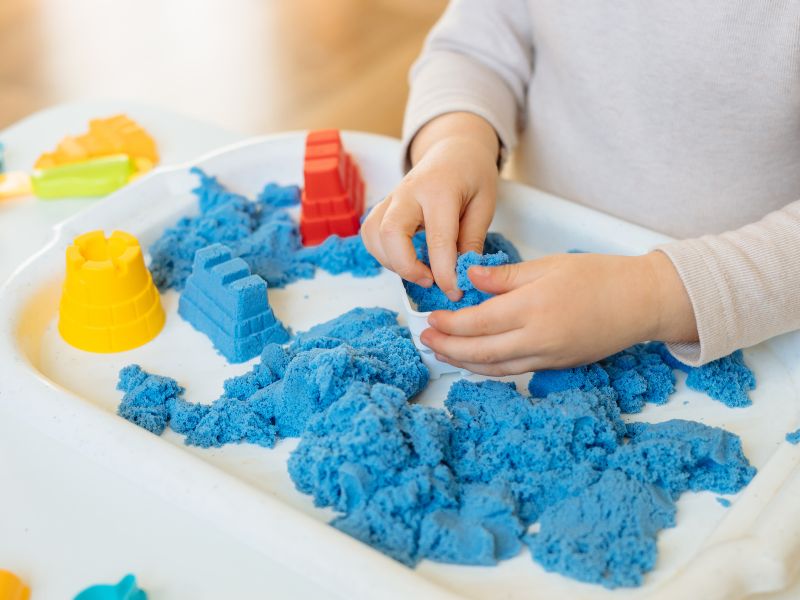
Selecting the right sand is crucial for creating sand play dough that is both enjoyable and safe for children. Here are some tips on how to choose the best sand:
- Cleanliness: Opt for clean, sanitized sand to ensure it is free from contaminants. You can purchase play sand from toy stores or craft shops, usually pre-cleaned and non-toxic.
- Texture: The texture of the sand will affect the final product. Fine sand is generally best as it blends easily with the other ingredients, resulting in a smoother dough.
- Color: If you want a natural look, go for regular sand. However, colored sand can add an exciting visual element to your play dough.
- Packaging: Pay attention to how the sand is packaged. If it is sealed and labeled as non-toxic, it’s a good indicator of quality and safety.
- Local vs. Store-Bought: While using sand from a local beach might seem like a good idea, ensure it is thoroughly cleaned and dried to remove any potential impurities or microorganisms.
- DIY Cleaning: If you decide to gather your sand, you can sanitize it by baking it in the oven at a low temperature for approximately 45 minutes.
Safety Considerations for Children Using Sand Play Dough
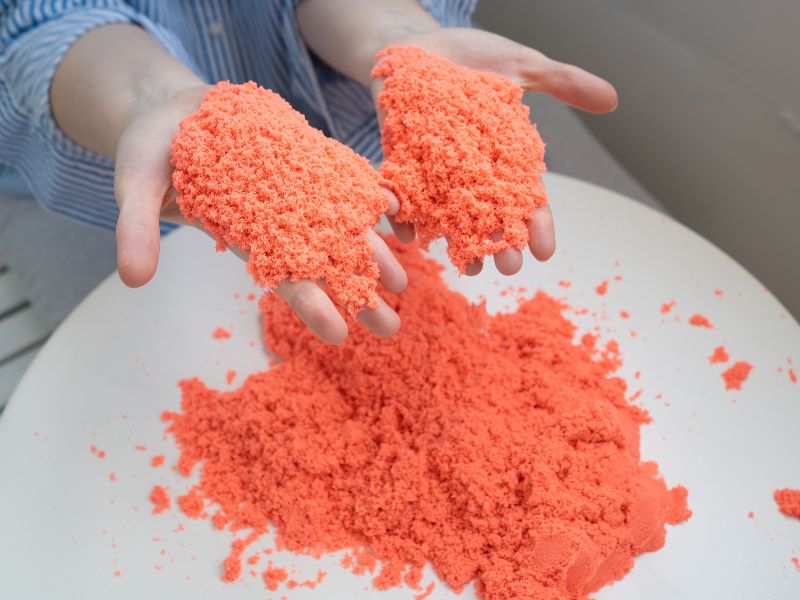
By taking the following precautions, you can ensure a safe and enjoyable experience with sand play dough:
Age and Supervision
Sand play dough is generally best for kids over two years old who are less likely to put it in their mouths. Regardless of age, always supervise children, particularly if small objects like beads are added to the dough.
Ingredient Safety
Ensure all components, including sand and any food coloring, are non-toxic. Check for allergies using alternative ingredients like gluten-free flour or essential oils.
Hygiene and Storage
Encourage handwashing before and after play to maintain cleanliness. Store the dough in an airtight container to keep it fresh and clean.
Steps to Make Sand Play Dough
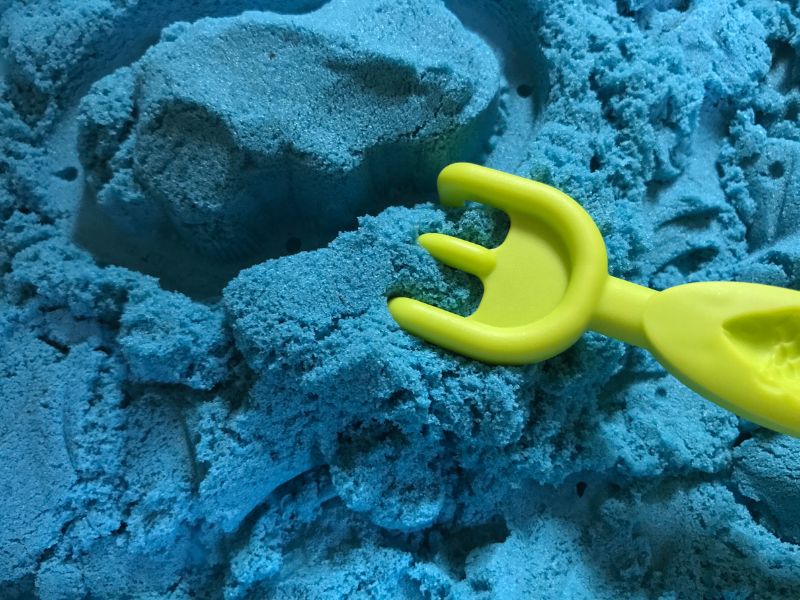
Step 1: Mix Dry Ingredients
Begin by placing the flour and salt in a large mixing bowl. Stir them together until they are well blended. This will serve as the base for your play dough.
Step 2: Prepare the Liquid Mixture
In a separate bowl, mix the warm water and vegetable oil. If you choose food coloring, this is the perfect time to add it to the liquid mixture. Stir until it’s all well combined.
Step 3: Combine the Mixtures
Gradually add the liquid mixture to the dry ingredients. Stir continuously to ensure that no lumps form. Continue to mix until a dough-like consistency is achieved.
Step 4: Add Sand
Now comes the fun part! Add the sand to the dough and knead it in. This will give the dough its unique, grainy texture. You may need to add more flour if the mixture becomes too wet or more water if it becomes too dry.
Step 5: Test the Texture
Take a small amount of dough and try to mold it. It should hold its shape without cracking. If the dough is too sticky, add a bit more flour. A small amount of water will do the trick if it’s too dry.
Step 6: Store or Play!
Once you’re satisfied with the texture, your sand play dough is ready for action! If you plan to store it for future use, put it in Ziplock bags or an airtight container to keep it fresh.
Tips for Enjoyment
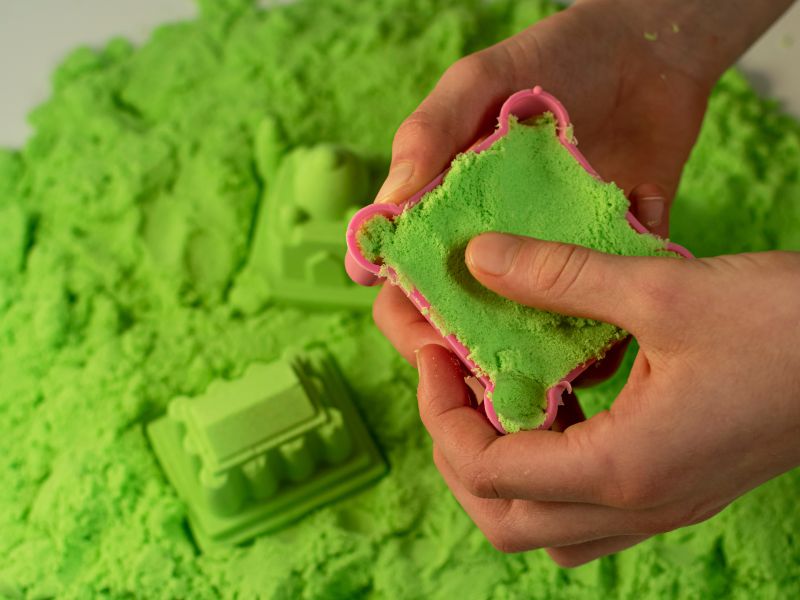
- Customize your sand play dough by adding small toys like shells or plastic sea creatures for added fun.
- Always supervise young children while playing with the dough, especially if you’ve added small objects.
- If the play dough starts to dry out, you can revive it with a small amount of water.
Frequently Asked Questions
You can use beach sand, but clean and dry it thoroughly to remove any impurities or microorganisms.
Stored in an airtight container, homemade sand play dough can remain fresh for up to a few weeks. The salt in the recipe acts as a natural preservative.
If the dough starts to dry, adding a small amount of water and kneading it in can revive its moldable qualities.
Yes, you can substitute all-purpose flour with gluten-free flour if your child has a gluten sensitivity or allergy.
Yes, you can use natural dyes like beet juice or turmeric for a more eco-friendly and all-natural option.
